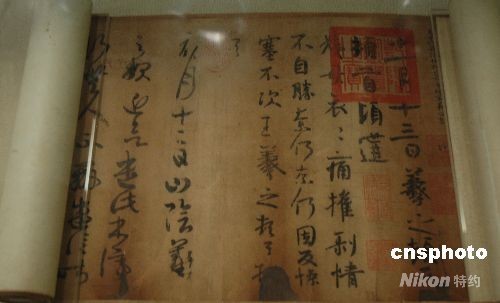|

|
|
A calligraphy work of ancient Chinese calligrapher Wang Xizhi. |
Chinese calligraphy has been submitted to the United Nations Educational Scientific and Cultural Organization (UNESCO) as a candidate for the Masterpieces of Oral and Intangible Heritage of Humanity (MOIHH) designation.
MOIHH is defined by the UNESCO as the practices, representations, expressions, knowledge and skills that communities, groups and, in some cases, individuals recognize as part of their cultural heritage.
With a 3,000-year history, Chinese calligraphy developed along with the evolution of Chinese characters, Li Shenghong, an expert with the Chinese National Academy of Arts, said?in Beijing?Thursday.
In China, calligraphy has been revered as an art form since it was first used in the 5th Century B.C., when it began with a simplified script in which the width of the brush strokes varied and the edges and ends were sharp.
Known as the "four treasures of the study", the paper, ink, brush and ink stone are essential implements of the art. Desk pads and paperweights are also used.
Chinese calligraphy is a unique oriental art of expression and a branch of learning. Through the medium of form, the handling of the brush, presentation, and style, calligraphy is believed to convey the moral integrity, character, emotions and aesthetic feelings of the artist.
Chinese calligraphy survives only as an art form as its practical function has diminished, though tens of millions people still learn and practice it, Li said.
"Being in an endangered position, it's in urgent need of being inherited and protected."
In June, the art form was put on the national list of intangible heritage for protection. The UNESCO will publish a decision on the application for world heritage in 2009.
|

|
|
An Irish athlete (2nd from L) learns to write Chinese calligraphy at the Olympic villiage in Beijing on July 29, 2008, during the Beijing Olympics. |
In 2001, China's Kunqu Opera was listed among the first batch of 19 MOIHH by the UNESCO.
China's Guqin Music, the 12-part suit of ancient Uygur music "Mukam" and the Changdiao or pastoral songs of the Mongolian ethnic group, are also named MOIHH.
(Xinhua News Agency October 10, 2008)